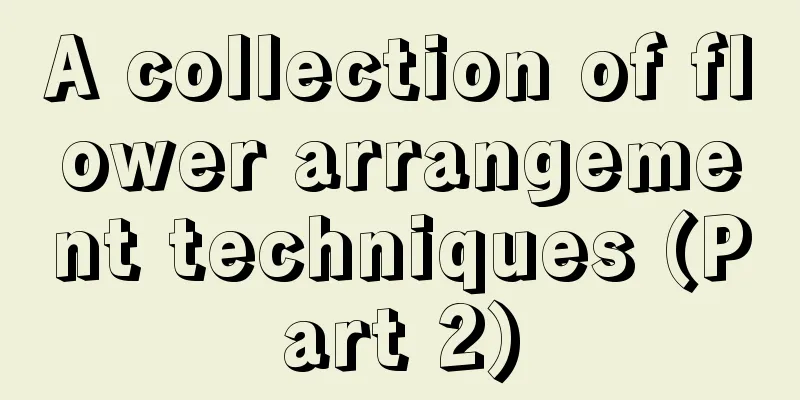A collection of flower arrangement techniques (Part 2)

Wire winding methodThis method can provide support for the flower branches and overcome certain defects in the flower branch shape. Use a metal wire of sufficient hardness to wrap around the flower branches according to your own ideas, but the metal wire should not be too thick so as not to affect the ornamental effect of the flower arrangement. For a more aesthetic effect, you can wrap the wire with green tissue paper or paint it green. Wire threading methodThis method is suitable for hollow flower branches, such as celery, marigolds, gerberas, etc. Choose a wire of appropriate thickness and insert it from the incision or the center of the stamen. If the part near the flower is difficult to penetrate, you can handle it flexibly according to the situation, either not completely penetrating the flower branch, or partially passing through the center and partially wrapping it. Wedge moldingThis method is suitable for rough woody flowers. You can use triangular wedges to insert into the cuts of the branches to achieve natural beauty without revealing any artificial traces. Cutting and bending methodIf the bending angle required by the flower branch is not large, you can use scissors to cut the branch obliquely. The depth of the cut should not exceed 2/3 of the branch diameter. Slowly bend the branch with your hands. Leaf rolling methodFlowers like indigofera and smilax can change their original shape by curling. You can take a leaf, spread it out, and use a thin stick to roll it from the tip to the stem until the leaf still has a certain degree of curl after you let go. Circle Leaf MethodFor leaves with petioles and soft surfaces, such as indigo leaves and ginger leaves, you can take a leaf, bend it, poke a small hole at the tip of the leaf, and then pass the petiole through. Support shaping methodFirst prepare the metal wire and transparent tape, then lay the leaf flat face down, attach the metal wire to the edge of the central vein, and then stick it with transparent tape. Leaf deformation methodThis method is suitable for plant leaves with wide leaves and hard texture, such as palm leaves and iron tree leaves. The leaves can be trimmed into round, fan-shaped and other shapes. |
<<: A collection of flower arrangement techniques (I)
>>: A collection of flower arrangement techniques (Part 3)
Recommend
How big can a lotus leaf be divided? What should I do if the leaves turn yellow?
1. How big should the lotus be before it can be d...
Management of Bougainvillea during flowering period, why is the flower color light
1. Management during flowering period 1. Watering...
How to grow yellow flower hibiscus
How to grow yellow flower Zhaobo Yellow flowered ...
How long does it take for Zephyranthes to bloom after germination?
How long does it take for Zephyranthes to bloom? ...
What fertilizer to use for rubber trees
Fertilizing rubber trees is very simple. You only...
When and how to change the soil of peacock arrowroot
Time to change soil for peacock arrowroot For the...
Put a handful of beans in the bottle, and the bean sprouts grew and burst the bottle. The whole family can’t finish it even after 3 days!
Which beans can sprout? 1. Soybean sprouts Bean s...
The difference between herbaceous peony and herbaceous peony
1. Difference of blades The leaves at the bottom ...
How to prevent balcony vegetable diseases and insect pests
Prevention Use well-drained soil: Moisture is a s...
Disease and Pest Control of Meiguanlan
Scaly mushroom They usually appear on the surface...
What is rosemary called in China and what is its flower language?
1. What is the language of flowers? It is a very ...
Can Jabuticaba be planted in pots?
Can Jabuticaba be planted in flower pots? Jabutic...
How to propagate the seeds of Clerodendrum thomsoniae
1. Planting time Although the sowing method will ...
Cultivation methods and precautions of Lobelia
How to grow Lobelia soil Lobelia likes moist soil...
How to propagate Gloxinia flowers
1. Planting 1. Generally, it is selected from Aug...









